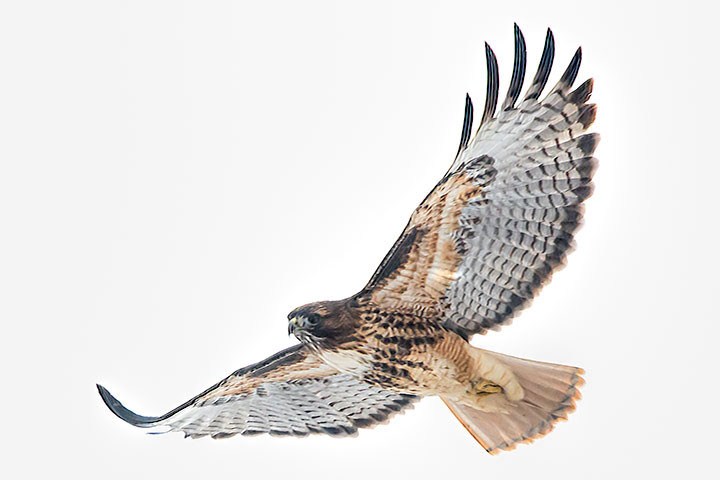A January jaunt through the open farmland south of the Main Lake usually reveals diverse raptors: eagles, buteos, falcons and owls. Adding to these flying predators, coyotes prowl the fields. Not so yesterday. The fields were covered with enough snow that the voles and mice were hidden. On this jaunt, the only raptors spotted were Bald Eagles and Red-tailed Hawks, two of each.
The plumage of Red-tailed Hawks is remarkably variable. Indeed, its eponymous and often spectacular tail is not always red, and even when coloured, the red might be unseen from below.
So, what does one use to reliably identify this hawk as it flies by overhead?
A good indicator of a Red-tailed Hawk is the broad splotchy belly-band. Even better are the dark patagial bands on the leading edge of the underwing. In ancient Rome, the patagium was a gold edging on a lady’s tunic. One modern usage of the word is an edging on a hawk’s wing. The dark patagium on the Red-tailed Hawk extends from the neck to the bend in the wing (the wrist).
A Red-tailed Hawk flies closely overhead and even though the underside of its tail isn’t red, the belly band and dark patagial marks betray its identity.


I’ve never been good at identifying birds, but thanks to you pointing out the reliable identifying features of this hawk, and providing such a fascinating description, I will now be able to spot red-tailed hawks when I see them. Thank you again, Alistair.